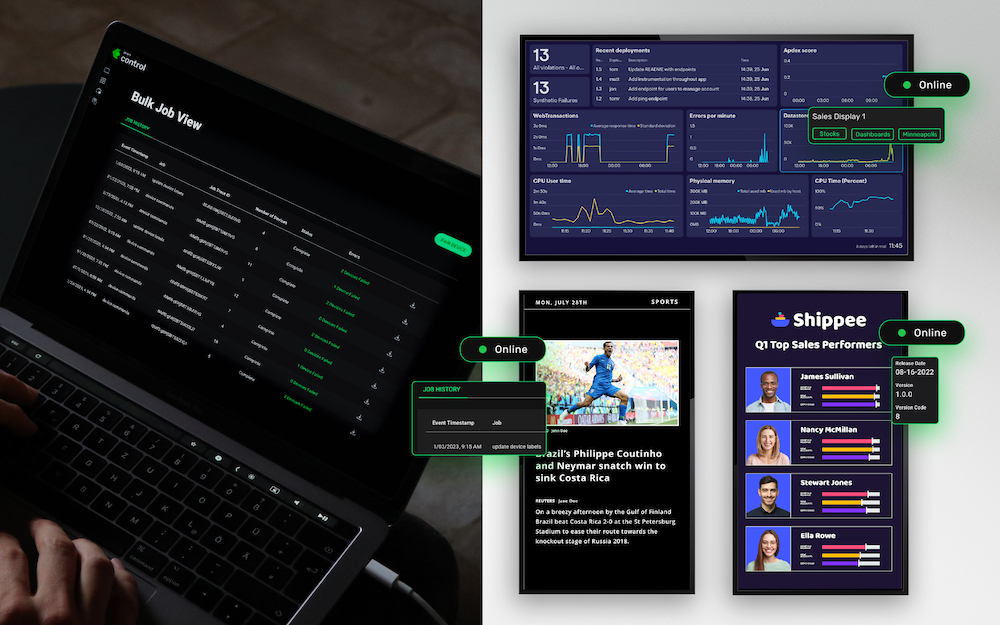In Today’s world news travels fast: You Need Crisis Communications
Depending on your business, there are specific emergency scenarios that you should prepare for, such as:
- Student safety protocols at schools and universities
- Compliance alerts, equipment failures and worker safety at manufacturing plants
- Breaking News, employee safety, and natural disasters at corporate offices
In all of these cases, it’s essential to reach your audience fast, and one of the most effective communication tools to accomplish this is digital signage. There are many ways to share content using digital signage—videos, graphic images, news feeds, wayfinding, slides, social media links, and so much more.
Digital signage can be installed in strategic locations—lobbies/reception areas, conference rooms, break rooms, kitchens, etc. Even the most complex crisis management protocols can be executed in an instant using digital signage and a content management system (CMS).
Let’s review the four stages in crisis management, and how timely communications can be critical. Remember to include campaigns and content that account for each stage:
Crisis Prevention – these campaigns educate people in order to reduce risk. For example, a fire prevention campaign in a paper warehouse that teaches employees proven safety practices saves lives and inventory. Safety videos can be shared on a loop, echoing the protocols that were shared in crisis prevention training.
Crisis Preparedness – a safe environment for students and workers begins with the ubiquitous motto of the Boy Sco

uts of America, “Be prepared.”
In schools, this means training students how to quickly exit the building during a fire drill and how to respond in a lockdown situation.
Safety protocols can be shared via digital signage in classrooms or the cafeteria to reinforce these practice drills.
Crisis Response – in an emergency situation your communications team can respond rapidly with alerts on digital signage.
By preparing in advance for the known risks of your industry, you can create templates that map out the best response to a given situation.
In the event of an emergency these templates will be ready to share quickly, on predetermined digital signs.
For example, a college campus can issue a rapid response to an active shooter on campus by sharing prepared alerts with the click of a button, notifying students where to seek shelter from harm.
Additional third party emergency alert systems, such as cameras and direct triggers to emergency services including the police and the fire department, can also be added to your crisis response communication. For more information contact your Skykit representative today at sales@skykit.com.
Crisis Recovery – in the aftermath of an emergency we need to regroup. In many cases this means sharing information about the transition back to normalcy. Once the recovery is complete you can resume regular digital signage campaigns.
Keep Calm and Carry On
Planning ahead for an emergency allows you to develop your crisis management content in a calm, neutral voice, whatever format you choose. This type of communication will assure your audience that you’re in control of the situation and increase confidence in your brand.
What I like about Skykit is that it lets users create content in applications they’re already familiar with, and leverage it to an infinite scale on digital signage. In a crisis Skykit enables fast, efficient communication, making it an essential tool to reach employees and customers in real time.



